The first page opened with a poem, “Grasp the Nettle,” followed by a reprinted letter to Superintendent Pratt from Conrad Roubideaux (Sioux) titled “Conrad Didn’t Give Up the Ship,” in which he described the hardships of finding work on the reservation. Page two included news that Pratt was out West soliciting signatures for the Severalty Bill…
Pratt, Richard Henry
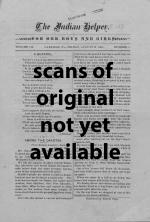

The first page opened with an untitled poem by J. W. Burgess reprinted from Sunshine, followed by “Our Walnut Tree” about the Man-On-the-Band-Stand’s efforts to keep students from picking green walnuts. The second page began with “The Captain,” which described the speech Capt. Pratt made during the student assembly explaining his work…
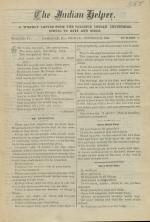
The first page opened with an untitled poem, with the first line “God Wants the Boys,” followed by anonymous advice “Be Inventive.” Next came two columns, “Girls Read This,” an exercise for good posture and “Boys Read This,” an exercise for good behavior. The news items on page two gave reports about Charley Wolf and Jesse Paul, Nez Perce…

The first page opened with an untitled poem that bore the first line, “No human life ere dawned on earth.” Then came an article titled “Judge Wright’s Talk,” that excerpted J.V. Wright’s discourse on the importance of the Indian students’ perseverance and the success of the Coeur d’Alene and Chippewa nations. The talk continued on page four.…
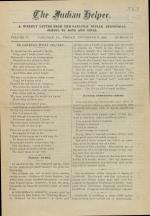
The first page opened with a poem, “Be Careful What You Say,” followed by “Indian Names,” on the origin of Indian names. Next came an article titled “Wanted, Something Inside,” about the value of persistence and perseverance, followed by small blurbs about the Christian population of Japan and the construction of a rabbit-proof fence in…
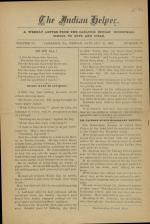
The first page opened with a poem titled “Do We All?” followed by an article, “Do You Want to Get Rich?” about the value of saving little things. The next article, “Dr. Jackson at Our Missionary Meeting,” described the work of Sheldon Jackson among the Metlakahtla boys at the Sitka Industrial School in Alaska. It continued on the fourth page.…
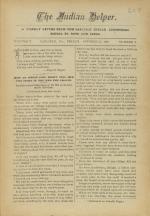
The first page opened with a poem by Bayard Taylor with the first line "Learn to live, and live to learn” followed by the fourth installment of the series titled “How An Indian Girl Might Tell Her Own Story if She Had the Chance: All Founded on Actual Observations of the Man-on-the-band-stand’s Chief Clerk” (continued from the previous week).…
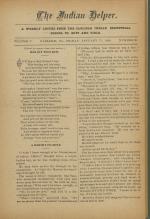
The first page opened with a poem titled "Hoe Out Your Row," followed by "A Worthy Example," that touted a fictional conversation between two boys musing on the accomplishments of Indian Commissioner T. J. Morgan. Page two included several articles and notices about country life for Outing students, news from the Omaha and Apache agencies, the…
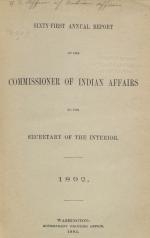
An excerpt from the Annual Report of the Commissioner of Indian Affairs to the Secretary of the Interior for the fiscal year ending 1892, containing the Thirteenth Annual Report of the Carlisle Indian Industrial School. The report, submitted by Superintendent Richard Henry Pratt, includes a table of the school's population, as well as…
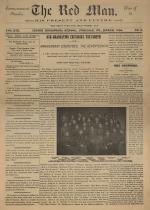
This issue commemorates the Eighth Graduating Exercises and Seventh Anniversary Exercises. The first page contained a list of distinguished guests in attendance. Graduation speeches from students are presented in the paper, as are transcribed accounts of the exercises. The list included Pennsylvania State officials, judges, clergymen, and…
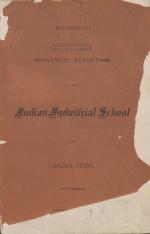
A description of this document is not currently available.
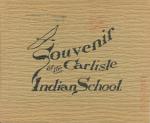
A souvenir booklet from the Carlisle Indian School, published for their 23rd year. A short description of the aims and goals of the school is presented. Images of students as they first arrived, as well as important visiting chiefs, are given, as are before and after images including those of Tom Torlino. Extracurricular…
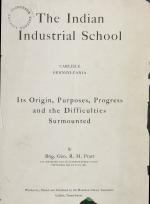
A description of this pamphlet is not currently available.
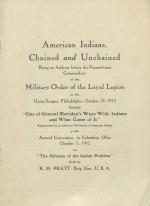
A description of this pamphlet is not currently available.
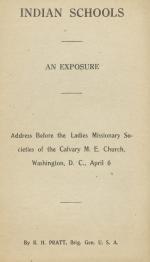
A summary of this document is not currently available.
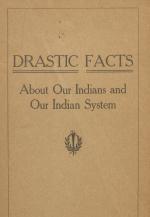
A description of this pamphlet is not currently available.
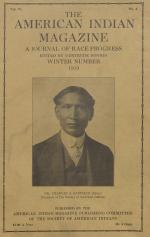
A description of this magazine is not currently available.
![First Group of Male Students [Side Angle], 1879 First Group of Male Students [Side Angle], 1879](/sites/default/files/styles/views_taxonomy/public/image-photo/00309B%233.jpg?itok=IQLFZ3SV)
Group portrait of first male students at the school from the Pine Ridge and Rosebud agencies. They arrived on October 6, 1879. Richard Henry Pratt is standing at far left and interpreter Charles Tackett is standing at far right.
Note: This is a different view of the first male students than is more commonly seen. It was taken from…
![First group of male students [version 1], 1879 First group of male students [version 1], 1879](/sites/default/files/styles/views_taxonomy/public/image-photo/NAA_73347.jpg?itok=1fD_RVg5)
Group portrait of first male students at the school from the Pine Ridge and Rosebud agencies. They arrived on October 6, 1879. Richard Henry Pratt is standing at far left and interpreter Charles Tackett is standing at far right.
Note: The version of this photograph in the Richard Henry Pratt Papers at Yale University includes an…
![First group of male students [version 2], 1879 First group of male students [version 2], 1879](/sites/default/files/styles/views_taxonomy/public/image-photo/CCHS_PA-CH1_030b.jpg?itok=ejf1CxGF)
Group portrait of first male students at the school from the Pine Ridge and Rosebud agencies. They arrived on October 6, 1879. Richard Henry Pratt is standing at far left and interpreter Charles Tackett is standing at far right.
Note: The Cumberland County Historical Society has several copies of this image, including PA-CH1-030b,…
![Five chiefs and two interpreters with Richard Henry Pratt [version 1], c.1880 Five chiefs and two interpreters with Richard Henry Pratt [version 1], c.1880](/sites/default/files/styles/views_taxonomy/public/image-photo/NAA_73338.jpg?itok=bKxZYb9U)
Portrait of chiefs Brother-to-All, Like the Bear, Poor Wolf (also known as Lean Wolf), Son of the Star, and American Horse posed with interpreters John Bridgeman and John Smith, standing in front of the bandstand on the school grounds. The man in the background on the left is probably Richard Henry Pratt.
Note: Identification of…

A posed group of male students in the Carlisle Indian School tin shop with their instructor and Richard Henry Pratt. They are, from left to right: Charles Oheltoint, Richard Henry Pratt, Henry Roman Nose, Paul Black Bear, J.H. Curtain (instructor), Ernest, and Koba.
The Cumberland County Historical Society has two copies of this image:…
![Visiting chiefs from the Great Nemaha Agency [version 1], 1880 Visiting chiefs from the Great Nemaha Agency [version 1], 1880](/sites/default/files/styles/views_taxonomy/public/image-photo/NAA_73343.jpg?itok=hH-BwQaP)
Portrait of a group of Native American men, white men, with one male student and two female students posed in front of a dormitory building on the school grounds. Richard Henry Pratt is standing at the far left.
The caption in the album for the Cumberland County Historical Society version of this image states that they are from the Great…
![Visiting chiefs from the Great Nemaha Agency [version 2], 1880 Visiting chiefs from the Great Nemaha Agency [version 2], 1880](/sites/default/files/styles/views_taxonomy/public/image-photo/CCHS_PA-CH1_091b_0.jpg?itok=HowHJ1FI)
Portrait of a group of Native American men, white men, with one male student and two female students posed in front of a dormitory building on the school grounds. Richard Henry Pratt is standing at the far left. The caption in the album states that they are from the Great Nemaha Agency and that the photo was taken on February 25, 1880.
![Richard Henry Pratt and Chief Spotted Tail with the "Quaker Ladies" [version 1], 1880 Richard Henry Pratt and Chief Spotted Tail with the "Quaker Ladies" [version 1], 1880](/sites/default/files/styles/views_taxonomy/public/image-photo/NAA_73426.jpg?itok=rrYUOP1z)
Portrait of Richard Henry Pratt and Chief Spotted Tail with Rebecca T. Haines (standing at left), Susan Longstreth (standing in center), and Mary Anna Longstreth (standing at rear right). The Longstreths and Haines were known as the "Quaker Ladies." All are posed on the bandstand on the school grounds. Spotted Tail was visiting the school…
